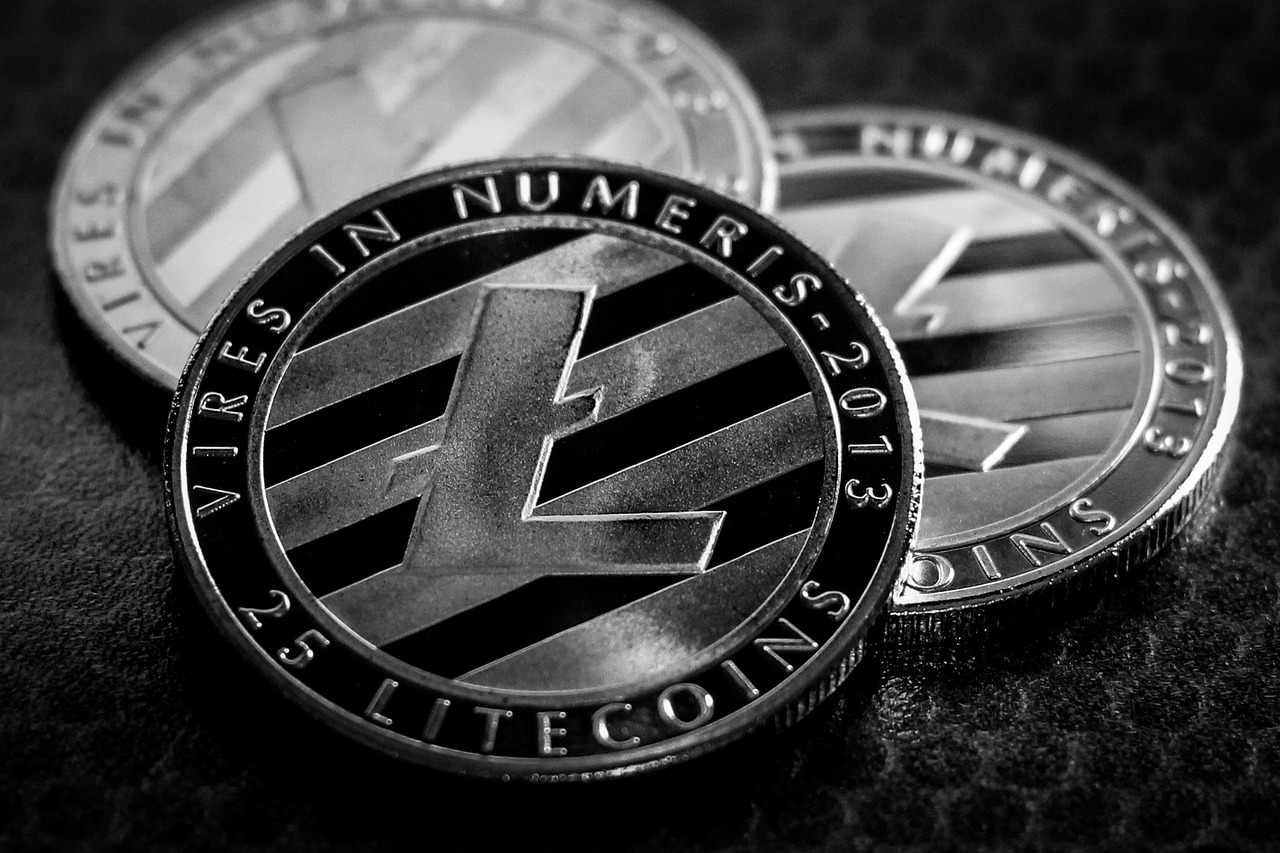Frax Finance - A Unique Stablecoin Approach
In the ever-evolving landscape of cryptocurrency, stablecoins have emerged as a crucial component, providing a bridge between the volatile world of crypto and the more stable fiat currencies. But what makes Frax Finance stand out in this crowded field? This article explores the innovative mechanisms behind Frax Finance, a project that combines the best of both worlds—algorithmic and collateralized stablecoins. By diving deep into its design, functionality, and market impact, we aim to shed light on why Frax is capturing the attention of investors and crypto enthusiasts alike.
Stablecoins are digital currencies specifically designed to maintain a stable value relative to a fiat currency, such as the US Dollar. Imagine trying to buy a cup of coffee with a currency that fluctuates wildly in value—one moment it’s worth a dollar, and the next, it’s worth fifty cents. That’s where stablecoins come in, acting as a safe harbor in the stormy seas of cryptocurrency volatility. They play a vital role in the cryptocurrency ecosystem by providing liquidity, enabling easier transactions, and acting as a reliable store of value. Without stablecoins, the crypto market would be a chaotic place, making it difficult for everyday users to engage with digital currencies.
What sets Frax Finance apart is its hybrid model that cleverly intertwines collateralization with algorithmic adjustments. Unlike traditional stablecoins that rely solely on one method, Frax employs a unique approach that allows for greater flexibility and stability. This dual mechanism means that Frax can adapt to market conditions in real-time, providing a more resilient solution for users. If you think about it, it’s like having a safety net that can also bounce back up when you fall—ensuring that you’re not just protected, but also able to thrive.
The collateralization aspect of Frax is crucial for ensuring stability and trustworthiness. By backing the stablecoin with real assets, Frax provides a level of security that many users crave. But how is this collateral managed? It’s a complex dance of assets, where the value of collateral is constantly monitored and adjusted to maintain the stablecoin’s peg. This dynamic management not only protects the value of Frax but also instills confidence among users, knowing their investments are safeguarded by tangible assets.
Frax utilizes a variety of assets as collateral to support its stablecoin. These include:
- Cryptocurrencies like Ether (ETH) and Bitcoin (BTC)
- Stable assets, such as other stablecoins
- Real-world assets, which can include tokenized assets from various sectors
Each type of collateral plays a specific role in maintaining the system’s integrity. For instance, cryptocurrencies offer high liquidity, while real-world assets can provide stability through diversification. This blend of collateral types ensures that Frax remains robust, even in turbulent market conditions.
In the world of finance, the term "liquidation" can send shivers down the spine of investors. However, in the context of Frax, liquidation processes are designed to protect both the platform and its users. When the value of collateral drops below a certain threshold, Frax has mechanisms in place to liquidate assets promptly. This ensures that the stablecoin remains pegged to its intended value, safeguarding user investments and maintaining trust in the system. It’s like having a fire alarm in your house—while you hope it never goes off, it’s comforting to know it’s there if needed.
Algorithmic mechanisms are the beating heart of Frax Finance, playing a vital role in maintaining its peg. These algorithms work tirelessly behind the scenes, adjusting the supply and demand of Frax in real-time. When demand for the stablecoin increases, the algorithms can issue more tokens, ensuring that the price remains stable. Conversely, if demand decreases, they can reduce the supply accordingly. This dynamic adjustment is akin to a skilled conductor leading an orchestra, ensuring that every instrument plays in harmony to create a beautiful symphony.
Since its inception, Frax Finance has made significant waves in the crypto market. Its innovative approach has not only attracted attention from investors but has also influenced liquidity and trading volume across various platforms. With a growing user base and increased adoption, Frax is reshaping how stablecoins are perceived and utilized in the broader cryptocurrency ecosystem.
Understanding how Frax is being adopted across various platforms is essential to grasping its full potential. Key use cases include:
- Decentralized finance (DeFi) applications, where Frax serves as a reliable medium of exchange
- Liquidity pools, providing users with opportunities to earn yields
- Cross-platform integrations, enhancing its utility across different ecosystems
These partnerships and applications not only enhance the utility of Frax but also contribute to its growing reputation as a go-to stablecoin in the crypto market.
Despite its innovative approach, Frax Finance does face challenges. The competitive landscape of stablecoins means that it must continually innovate to stay ahead. Potential risks include market fluctuations that could affect collateral values and regulatory scrutiny that could impact its operations. It’s a bit like riding a bicycle downhill—while it’s exhilarating, one must stay alert to avoid obstacles that could lead to a crash.
What is Frax Finance?
Frax Finance is a stablecoin project that combines collateralized and algorithmic mechanisms to maintain a stable value.
How does Frax ensure its stability?
Frax uses a hybrid model that includes collateralization of assets and algorithmic adjustments to dynamically manage supply and demand.
What types of collateral does Frax use?
Frax accepts various types of collateral, including cryptocurrencies, stable assets, and real-world tokenized assets.
What are the risks associated with Frax?
Potential risks include market volatility affecting collateral values and regulatory challenges that could impact its operations.

Understanding Stablecoins
Stablecoins are digital currencies that aim to maintain a stable value by pegging themselves to a fiat currency, such as the US Dollar or Euro. Imagine trying to shop online with Bitcoin; one moment it could buy you a new laptop, and the next, you might only be able to afford a coffee! This volatility can be a significant barrier for everyday transactions. That’s where stablecoins come into play, providing a much-needed solution to this issue.
In the cryptocurrency ecosystem, stablecoins serve as a bridge between the traditional financial world and the digital currency space. They are essential for a variety of reasons:
- Price Stability: By pegging their value to stable assets, these coins provide a reliable medium of exchange.
- Liquidity: Stablecoins facilitate trading on various exchanges, allowing users to move in and out of volatile cryptocurrencies with ease.
- Decentralization: Many stablecoins operate on blockchain technology, ensuring transparency and security.
Furthermore, stablecoins are not just a safe haven; they also play a vital role in decentralized finance (DeFi). They enable users to lend, borrow, and earn interest on their holdings without the fear of sudden price drops. For instance, when you deposit stablecoins into a lending platform, you can earn interest while maintaining the value of your investment. It’s like having your cake and eating it too!
However, it's important to note that not all stablecoins are created equal. They generally fall into three categories:
| Type | Description | Examples |
|---|---|---|
| Fiat-Collateralized | Backed by a reserve of fiat currency held in a bank. | USDC, Tether (USDT) |
| Crypto-Collateralized | Backed by other cryptocurrencies, often over-collateralized to absorb volatility. | Dai |
| Algorithmic | Uses algorithms to control the supply and demand of the stablecoin. | Frax, Ampleforth |
As we explore the world of stablecoins, it becomes clear that they are not just a passing trend but a fundamental component of the cryptocurrency landscape. They provide users with a sense of security and stability while enabling the growth of innovative financial products and services. So, whether you're a seasoned trader or a newcomer, understanding stablecoins is crucial for navigating the ever-evolving crypto market.

The Frax Model Explained
The Frax Finance model is a groundbreaking approach that merges the best features of both collateralized and algorithmic stablecoins. Unlike traditional stablecoins that rely solely on reserves of fiat currency or other assets to maintain their value, Frax introduces a hybrid mechanism that dynamically adjusts to market conditions. This innovative design not only enhances stability but also allows for greater scalability. Imagine a stablecoin that can adapt to the ebbs and flows of the market like a skilled surfer riding the waves—this is precisely what Frax aims to achieve.
At the heart of the Frax model lies its unique collateralization mechanism. By backing its stablecoin with a mix of collateralized assets and algorithmic adjustments, Frax can maintain a stable value while also being flexible enough to respond to market demands. This dual approach sets it apart from its competitors, allowing it to thrive in a volatile environment where traditional stablecoins might struggle.
The collateralization aspect of Frax is crucial. It ensures that there is always a safety net in place, providing users with confidence in the stability of their holdings. The system is designed to maintain a balance between the amount of collateral backing the stablecoin and the circulating supply. This means that when demand for the stablecoin increases, the algorithm can adjust the supply accordingly, maintaining the peg to the US dollar or other fiat currencies.
A key feature of the Frax model is the variety of assets that can be used as collateral. These include popular cryptocurrencies like Ethereum (ETH) and stablecoins such as DAI, among others. By diversifying the types of collateral, Frax not only enhances its stability but also mitigates risks associated with individual asset volatility. In essence, the more diverse the collateral pool, the less likely it is that a single asset's downturn will jeopardize the entire system.
Another critical component of the Frax model is its liquidation process. In the event of market fluctuations that threaten the stability of the collateral, the system has built-in mechanisms to liquidate assets efficiently. This process is designed to protect both the integrity of the stablecoin and the investments of its users. When collateral value drops below a certain threshold, the system automatically triggers liquidations to ensure that the stablecoin remains fully backed. This proactive approach helps to maintain user trust and system reliability.
Beyond the collateralization mechanism, the algorithmic adjustments play a vital role in maintaining the peg. The Frax algorithm constantly monitors market conditions, adjusting the supply of the stablecoin based on demand. This dynamic approach allows the system to expand or contract the circulating supply, ensuring that it remains closely aligned with the value of the underlying fiat currency. Think of it like a finely tuned engine that adjusts its performance based on the terrain—Frax's algorithms ensure optimal performance regardless of market conditions.
In summary, the Frax model is a unique blend of collateralization and algorithmic adjustments that sets it apart from traditional stablecoins. By leveraging the strengths of both approaches, Frax provides a more resilient and adaptable stablecoin solution. This innovative model not only enhances user confidence but also positions Frax as a formidable player in the ever-evolving cryptocurrency landscape.
- What is Frax Finance? - Frax Finance is a stablecoin project that combines both collateralized and algorithmic mechanisms to maintain a stable value.
- How does Frax maintain its stability? - Frax utilizes a hybrid model that includes a collateralization mechanism and algorithmic adjustments to regulate supply and demand.
- What types of collateral does Frax use? - Frax accepts various assets, including cryptocurrencies like Ethereum and stablecoins such as DAI, to back its stablecoin.
- What happens during liquidations? - In case of market fluctuations, Frax has processes in place to liquidate collateral efficiently to maintain stability.

Collateralization Mechanism
The of Frax Finance is a cornerstone of its innovative approach to stablecoins. Unlike traditional stablecoins that rely solely on being fully backed by fiat currencies or other assets, Frax employs a hybrid model that combines both collateralization and algorithmic adjustments. This unique blend not only enhances stability but also allows for greater flexibility in managing the supply and demand dynamics of the stablecoin.
At its core, the collateralization mechanism ensures that Frax is partially backed by a reserve of assets, which helps maintain its peg to the US Dollar. This backing instills confidence among users, knowing that their investments are supported by tangible value. The system utilizes a variety of assets as collateral, which can include cryptocurrencies, stablecoins, and other digital assets. By diversifying the types of collateral, Frax mitigates risks that arise from the volatility of any single asset.
One of the most intriguing aspects of Frax's collateralization is how it manages these assets. The platform employs a sophisticated system that continuously monitors the value of the collateral and adjusts the collateralization ratio accordingly. This means that if the value of the collateral drops significantly, the system can take action to either liquidate some of the assets or adjust the supply of Frax stablecoins in circulation to maintain stability. This dynamic approach helps prevent situations where the stablecoin could lose its peg, which is a common issue faced by many other stablecoins in the market.
| Type of Collateral | Role in Stability |
|---|---|
| Cryptocurrencies | Provides liquidity and potential for appreciation. |
| Stablecoins | Offers a reliable backing to maintain the peg. |
| Other Digital Assets | Diversifies risk and enhances overall system integrity. |
Moreover, the liquidation processes are designed to protect the integrity of the collateralization mechanism. In the event of market fluctuations that threaten the value of the collateral, Frax has built-in protocols to liquidate assets efficiently and effectively. This proactive approach ensures that the system remains robust and that users' investments are safeguarded against extreme market conditions.
In summary, the collateralization mechanism of Frax Finance is not just about having assets backing the stablecoin; it’s about creating a resilient system that can adapt to market changes while maintaining a stable value. This innovative framework positions Frax as a formidable player in the stablecoin ecosystem, providing users with confidence and reliability in a space often marred by volatility.
- What is the main purpose of collateralization in Frax Finance?
Collateralization helps maintain the stability of the Frax stablecoin by backing it with various assets, ensuring that it can hold its peg to the US Dollar. - How does Frax respond to fluctuations in collateral value?
The system continuously monitors collateral values and can liquidate assets or adjust the supply of Frax stablecoins to maintain stability. - What types of assets can be used as collateral?
Frax accepts a range of assets, including cryptocurrencies, other stablecoins, and various digital assets, to diversify risk and enhance stability.

Types of Collateral Used
The Frax Finance model stands out not only for its innovative approach but also for the variety of collateral it employs to maintain stability. In a world where stablecoins often rely on a single type of backing, Frax takes a more versatile route. This hybrid model is designed to create a resilient ecosystem that can withstand market fluctuations while ensuring that the value of the stablecoin remains pegged to the US dollar.
At its core, Frax utilizes a mix of both crypto assets and fiat-backed tokens as collateral. This diverse range of assets not only enhances the system's robustness but also allows for greater flexibility in managing liquidity. Some of the primary types of collateral employed by Frax include:
- Wrapped Bitcoin (WBTC): This is a popular choice among users since it allows Bitcoin holders to participate in the Ethereum ecosystem while still retaining exposure to Bitcoin's value.
- Ethereum (ETH): As one of the most widely used cryptocurrencies, Ethereum serves as a significant part of Frax's collateral pool, providing both stability and liquidity.
- Stablecoins: Frax also accepts other stablecoins, such as USDC and DAI, which helps to create a more stable environment by leveraging the inherent stability of these assets.
These various forms of collateral not only help maintain the peg but also offer users a range of options depending on their risk appetite and investment strategy. By diversifying its collateral base, Frax Finance minimizes the risks associated with relying on a single asset, thus enhancing the overall security of the stablecoin.
Furthermore, the choice of collateral influences the liquidation mechanisms and overall health of the ecosystem. For instance, if the value of a specific collateral type drops significantly, Frax has protocols in place to manage these risks effectively, ensuring that the peg is maintained and user investments are protected. This dynamic approach to collateral management is what sets Frax apart from many traditional stablecoins, which often struggle with volatility and liquidity issues.
In summary, the types of collateral used by Frax Finance are not just a technical detail; they are a fundamental part of what makes the project unique. By leveraging a diverse range of assets, Frax creates a more sustainable and resilient stablecoin that can adapt to changing market conditions while providing users with the stability they seek in the world of cryptocurrencies.
What is Frax Finance?
Frax Finance is a stablecoin project that combines both collateralized and algorithmic mechanisms to maintain a stable value relative to fiat currencies, primarily the US dollar.
What types of collateral does Frax use?
Frax utilizes a mix of crypto assets such as Wrapped Bitcoin (WBTC), Ethereum (ETH), and other stablecoins like USDC and DAI to back its stablecoin.
How does Frax maintain its peg?
Frax maintains its peg through a combination of collateralization and algorithmic adjustments that dynamically manage supply and demand based on market conditions.
What are the risks associated with Frax Finance?
Like any financial system, Frax faces challenges, including market volatility and the potential for liquidation of collateral. However, its diverse collateral base aims to mitigate these risks.

Liquidation Processes
The liquidation processes within Frax Finance are designed to ensure the stability and integrity of the stablecoin, especially during periods of market volatility. Imagine a safety net that kicks in when things start to get shaky; that's exactly what Frax aims to provide. When the value of collateral backing the stablecoin drops below a certain threshold, the system automatically triggers a liquidation process to protect both the stablecoin's peg and the investments of its users. This proactive approach is crucial because it helps maintain trust in the system, allowing users to feel secure in their holdings.
Liquidation occurs when the collateralization ratio falls below a predefined level. This ratio is a critical measurement that indicates how much collateral backs each Frax stablecoin in circulation. If the collateral backing the stablecoin becomes insufficient, Frax Finance steps in to liquidate a portion of the collateral assets. This process not only helps to restore the collateralization ratio but also reinforces the stablecoin's value. Think of it as a safeguard that ensures the stablecoin remains anchored to its intended value, even when the market is turbulent.
Here’s a brief overview of how the liquidation process works:
- Monitoring: The Frax protocol continuously monitors the value of the collateral assets.
- Threshold Trigger: If the value dips below the acceptable collateralization ratio, a liquidation event is triggered.
- Liquidation Execution: The protocol sells off the necessary amount of collateral to restore balance.
- Distribution of Proceeds: The proceeds from the liquidation are used to maintain the value of the Frax stablecoin and ensure that all holders are protected.
This systematic approach not only stabilizes the currency but also instills confidence among users. The transparent nature of the liquidation process means that anyone can observe how and when liquidations occur, which adds another layer of trust to the system. Furthermore, Frax Finance takes into consideration the potential impact of liquidation on the market. By strategically managing the timing and execution of liquidations, the platform aims to minimize adverse effects on the price of both the collateral and the stablecoin itself.
In conclusion, the liquidation processes in Frax Finance are a vital component of its overall strategy to maintain stability. By ensuring that collateral levels are adequate and taking decisive action when they are not, Frax can uphold its promise of a reliable stablecoin, even amidst the unpredictable nature of the cryptocurrency market.
What happens during a liquidation event in Frax Finance?
During a liquidation event, the protocol sells off collateral assets to restore the required collateralization ratio, ensuring the stablecoin remains pegged to its value.
How does Frax Finance determine the collateralization ratio?
The collateralization ratio is determined by the value of the collateral assets compared to the amount of Frax stablecoins in circulation. A higher ratio indicates stronger backing.
Can users participate in the liquidation process?
While users cannot directly participate in liquidations, they can benefit from the stability that the liquidation processes provide, as it helps maintain the value of their holdings.

Algorithmic Adjustments
The world of stablecoins is often riddled with challenges, primarily stemming from the inherent volatility of the cryptocurrency market. This is where Frax Finance sets itself apart with its innovative algorithmic adjustments. Think of these adjustments as the finely-tuned gears of a clock, working seamlessly to maintain the perfect time—only in this case, it’s about keeping the stablecoin pegged to the dollar. By dynamically managing supply and demand, Frax employs a sophisticated algorithm that reacts to market conditions in real-time, ensuring stability in an otherwise chaotic environment.
At the heart of Frax's algorithmic adjustments lies a system that monitors various market indicators. When the price of Frax deviates from its target peg, the algorithm kicks into action. For instance, if the price of Frax rises above $1, the system will automatically increase the supply of the stablecoin. This is akin to a thermostat adjusting the temperature in your home; when it gets too hot, it cools down, and when it’s too cold, it heats up. This self-regulating mechanism is crucial for maintaining the equilibrium necessary for a stablecoin.
Moreover, the adjustments are not just reactive; they are also predictive. The algorithm analyzes historical data and trends to anticipate movements in the market. This predictive capability allows Frax to stay one step ahead, minimizing the risk of significant price fluctuations. For example, if the algorithm detects a pattern that suggests an impending surge in demand, it can preemptively increase the supply of Frax to meet that demand before prices start to rise. This proactive approach is what makes Frax a formidable player in the stablecoin arena.
In addition to supply adjustments, the Frax system also incorporates liquidity incentives to encourage users to participate in maintaining the peg. By offering rewards for providing liquidity, Frax creates a robust ecosystem where users are motivated to keep the stablecoin stable. This is similar to how a well-oiled machine operates; every part has a role, and when each component works in harmony, the entire system functions efficiently.
To summarize the key features of Frax's algorithmic adjustments, consider the following table:
| Feature | Description |
|---|---|
| Dynamic Supply Management | Adjusts the supply of Frax based on real-time market conditions to maintain the peg. |
| Predictive Analytics | Analyzes historical data to forecast demand and preemptively adjust supply. |
| Liquidity Incentives | Encourages user participation by rewarding liquidity providers, enhancing market stability. |
In conclusion, the algorithmic adjustments employed by Frax Finance are a game-changer in the stablecoin landscape. By combining real-time data analysis with predictive capabilities, Frax not only maintains its peg but also fosters a vibrant ecosystem that benefits all participants. As the cryptocurrency space continues to evolve, Frax's innovative approach may very well set the standard for future stablecoins.
- What is Frax Finance? Frax Finance is a stablecoin project that combines algorithmic and collateralized mechanisms to maintain a stable value.
- How does Frax maintain its peg? Frax uses algorithmic adjustments to dynamically manage supply and demand, ensuring that the stablecoin remains close to its target value.
- What types of collateral does Frax use? Frax accepts various assets as collateral, which helps back the value of the stablecoin.
- What are the risks associated with Frax? Like any cryptocurrency, Frax faces risks related to market volatility and regulatory changes.

Market Impact of Frax
The emergence of Frax Finance has undeniably reshaped the landscape of stablecoins within the cryptocurrency market. By introducing a unique hybrid model that fuses both collateralized and algorithmic elements, Frax has carved out a niche that not only enhances stability but also encourages greater liquidity. But what does this really mean for the market? Let’s dive into the implications of Frax and how it is influencing trading volumes, liquidity, and overall market dynamics.
One of the most significant impacts of Frax is its ability to attract liquidity. In a market often characterized by volatility, having a stablecoin that can maintain its value while also being responsive to market conditions is like finding a lighthouse in a stormy sea. This responsiveness is critical as it allows traders and investors to navigate through turbulent market waters with greater confidence. As a result, we have witnessed an uptick in trading volumes across various exchanges where Frax is listed, contributing to a more dynamic trading environment.
Moreover, Frax’s innovative approach has led to increased adoption among decentralized finance (DeFi) platforms. By integrating Frax, these platforms can offer users a stable medium for transactions, lending, and borrowing without the fear of sudden value drops. This adoption has snowballed, with numerous partnerships emerging that further solidify Frax's position in the market. For instance, collaborations with major DeFi protocols have not only increased the utility of Frax but have also enhanced its visibility and trustworthiness among users.
To better understand the market impact, let's take a look at some key metrics:
| Metric | Before Frax Launch | After Frax Launch |
|---|---|---|
| Average Daily Trading Volume | $500 million | $1.2 billion |
| Number of Active Users | 50,000 | 150,000 |
| Liquidity Pool Size | $100 million | $300 million |
These figures illustrate a clear upward trend in market activity attributed to the introduction of Frax. But it’s not just about numbers; the sentiment surrounding Frax is also crucial. Many users appreciate the dual mechanism of collateralization and algorithmic adjustments, which instills a sense of security and trust. In a world where many stablecoins have faced scrutiny over their backing and operational transparency, Frax stands out as a beacon of innovation.
However, it’s essential to recognize that with great innovation comes great responsibility. The market impact of Frax is not without its challenges. As it gains traction, there are concerns regarding market saturation and the potential for increased competition from other stablecoin projects. The landscape is ever-evolving, and while Frax has made significant strides, it must continue to adapt and innovate to maintain its competitive edge.
In summary, the market impact of Frax Finance is multifaceted, characterized by increased liquidity, heightened trading volumes, and robust adoption across DeFi platforms. As the cryptocurrency ecosystem continues to grow, Frax’s unique approach positions it as a formidable player in the stablecoin arena, one that is likely to influence market dynamics for years to come.
- What is Frax Finance? Frax Finance is a stablecoin project that combines collateralized and algorithmic mechanisms to maintain stability in its value.
- How does Frax maintain its peg? Frax uses a hybrid model that adjusts supply and demand dynamically through algorithmic mechanisms while being backed by collateral.
- What are the benefits of using Frax? Users benefit from reduced volatility, increased liquidity, and enhanced utility across various DeFi platforms.
- What challenges does Frax face? Frax faces challenges such as market saturation and competition from other stablecoins, which could impact its long-term viability.

Adoption and Use Cases
The adoption of Frax Finance has been nothing short of remarkable, showcasing its versatility and appeal across various sectors within the cryptocurrency landscape. As the world becomes increasingly digital, the need for stable, reliable financial instruments is paramount. Frax Finance steps into this role, offering a unique stablecoin solution that appeals to both individual users and institutional players alike. With its hybrid model, it has created a niche that attracts a diverse range of users, from traders seeking liquidity to developers looking to integrate stablecoins into their decentralized applications.
One of the most exciting aspects of Frax is its integration into decentralized finance (DeFi) platforms. By providing a stable medium of exchange, Frax enables users to engage in various DeFi activities such as lending, borrowing, and yield farming without the fear of volatility that often plagues other cryptocurrencies. For instance, users can deposit Frax into liquidity pools, earning rewards while maintaining value stability. This makes Frax a preferred choice for those looking to maximize their returns while minimizing risk.
Moreover, the partnerships that Frax Finance has forged with other DeFi protocols have significantly expanded its use cases. For example, collaborations with decentralized exchanges (DEXs) allow users to trade Frax seamlessly, enhancing liquidity and trading volume. Additionally, integrations with lending platforms enable users to use Frax as collateral, unlocking even more financial opportunities. This interconnectedness within the DeFi ecosystem not only boosts Frax's utility but also reinforces its position as a go-to stablecoin for various applications.
Furthermore, Frax's appeal extends beyond the DeFi realm. The stablecoin is increasingly being adopted by merchants and service providers who are looking for a reliable payment solution. With its stable value, businesses can accept Frax without worrying about the fluctuations that often accompany other cryptocurrencies. This adoption is crucial as it paves the way for broader acceptance of digital currencies in everyday transactions, bridging the gap between traditional finance and the burgeoning crypto economy.
To illustrate the diverse use cases of Frax, let’s look at some key areas of adoption:
- DeFi Lending and Borrowing: Users can leverage Frax as collateral to borrow other assets or earn interest on their holdings.
- Liquidity Provisioning: Frax can be used in liquidity pools across various DEXs, allowing users to earn trading fees.
- Payment Solutions: Businesses are increasingly accepting Frax for payments, providing a stable alternative to fiat currencies.
- Cross-Platform Integrations: Frax is being integrated into a multitude of platforms, enhancing its functionality and reach.
In summary, the adoption of Frax Finance is a testament to its innovative approach and the growing demand for stable financial instruments in the digital age. As it continues to carve out its place within the cryptocurrency ecosystem, the potential for new use cases and partnerships remains vast, promising an exciting future for this unique stablecoin.
What is Frax Finance?
Frax Finance is a stablecoin project that combines algorithmic and collateralized mechanisms to maintain a stable value, offering a unique alternative to traditional stablecoins.
How does Frax maintain its stability?
Frax uses a hybrid model that incorporates both collateralization and algorithmic adjustments to dynamically manage its supply and demand, ensuring price stability.
Where can I use Frax?
Frax can be used across various DeFi platforms for lending, borrowing, and liquidity provision. Additionally, it is being adopted by merchants for everyday transactions.
What are the risks associated with Frax?
Like any cryptocurrency, Frax faces risks including market volatility, regulatory scrutiny, and potential challenges in maintaining its peg during extreme market conditions.

Challenges and Risks
While Frax Finance presents a groundbreaking approach to stablecoins, it is not without its . The dynamic nature of the cryptocurrency market means that even the most innovative projects must navigate a landscape filled with uncertainties. One of the primary challenges is the inherent volatility of the crypto market itself. Despite Frax's hybrid model designed to mitigate price fluctuations, external market forces can still exert significant pressure on its stability.
Moreover, the reliance on collateralization introduces its own set of risks. If the value of the collateral assets declines sharply, it could jeopardize the stability of the Frax stablecoin. This scenario raises questions about the types of collateral accepted and their liquidity. For instance, if a significant portion of the collateral is tied to illiquid assets, it could lead to complications in maintaining the peg during market downturns.
Another critical aspect to consider is the liquidation process. While Frax has mechanisms in place to manage liquidations, the execution of these processes during extreme market conditions can be challenging. If liquidations are not handled effectively, it could result in cascading failures, affecting not just the Frax ecosystem but also the broader market sentiment towards stablecoins.
Furthermore, regulatory scrutiny is an ongoing concern for all stablecoin projects, including Frax. As governments and financial authorities around the world tighten regulations on cryptocurrencies, Frax may face challenges in compliance. This could impact its operations and limit its adoption across various platforms, ultimately affecting its market position.
To summarize, the challenges and risks facing Frax Finance can be categorized into several key areas:
- Market Volatility: The unpredictable nature of the cryptocurrency market can affect the stability of Frax.
- Collateral Value Fluctuations: A decline in the value of collateral assets poses a risk to maintaining the peg.
- Liquidation Risks: Ineffective liquidation processes during market downturns can lead to instability.
- Regulatory Concerns: Increasing scrutiny from regulators may impact operational capabilities.
Addressing these challenges will be crucial for Frax Finance as it aims to solidify its position in the competitive stablecoin landscape. Continuous innovation, effective risk management strategies, and proactive engagement with regulatory bodies will be essential to navigate these hurdles successfully.
Here are some common questions regarding Frax Finance and its operational model:
- What makes Frax different from traditional stablecoins?
Frax combines both collateralized and algorithmic mechanisms, allowing it to adapt dynamically to market conditions while maintaining stability. - How does Frax ensure the value of its stablecoin?
Frax uses a hybrid model that includes collateralization and algorithmic adjustments to maintain its peg to the US dollar. - What types of collateral does Frax accept?
Frax accepts a variety of assets, including cryptocurrencies and potentially other forms of digital collateral, to back its stablecoin. - Are there any risks associated with using Frax?
Yes, like any stablecoin, Frax faces risks related to market volatility, collateral value fluctuations, liquidation processes, and regulatory scrutiny.
Frequently Asked Questions
- What is Frax Finance?
Frax Finance is a unique stablecoin project that combines the benefits of both algorithmic and collateralized stablecoins. It aims to provide a stable digital currency that can maintain its value relative to fiat currencies while leveraging innovative mechanisms for stability and flexibility.
- How does Frax differ from traditional stablecoins?
Unlike traditional stablecoins that are either fully collateralized or entirely algorithmic, Frax utilizes a hybrid model. This means it incorporates both collateralized assets and algorithmic adjustments to dynamically manage supply and demand, ensuring a more resilient and adaptable stablecoin.
- What types of collateral does Frax use?
Frax accepts various assets as collateral, including cryptocurrencies like Ethereum and stablecoins like USDC. These assets are crucial for maintaining the system's integrity and ensuring that the value of Frax remains stable in fluctuating markets.
- How does the liquidation process work in Frax?
In the event of market fluctuations, Frax employs a liquidation process to protect its stability. If the value of collateral falls below a certain threshold, the system automatically liquidates the collateral to ensure that the stablecoin remains pegged to its target value, thereby safeguarding user investments.
- What role do algorithmic adjustments play in Frax?
Algorithmic adjustments are vital for maintaining the peg of Frax. The algorithms monitor market conditions and dynamically adjust the supply of Frax tokens based on demand, ensuring that the stablecoin remains stable and reliable in various market scenarios.
- What is the market impact of Frax Finance?
Frax Finance has significantly influenced the crypto market by enhancing liquidity and trading volume. Its unique model has attracted users and investors, contributing to a more dynamic and competitive stablecoin landscape.
- How is Frax being adopted across different platforms?
Frax is being integrated into various decentralized finance (DeFi) platforms, allowing users to leverage its stability for trading, lending, and yield farming. Key partnerships further enhance its utility, making it a popular choice among crypto enthusiasts.
- What challenges does Frax face?
Despite its innovative approach, Frax encounters challenges such as market volatility, regulatory scrutiny, and competition from other stablecoins. These factors could impact its long-term viability, making it essential for the team to continuously adapt and improve the system.



















